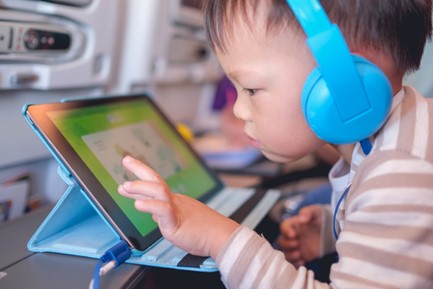By Michael Hilkemeijer
There has been much debate in the literature about the use of digital games in education, particularly in the early years. Authors have raised concerns to do with playing computer games and the harmful exposure of their content. And there are issues with the use of digital technology in early childhood education displacing other important learning and play activities.
Such researchers often stick to the belief that digital technology or ICT in early childhood education “encourages children to be passive recipients, solitary computer game players isolated from social interactions in learning and play, deprived of movement, role playing, building things and other active experiences” (UNESCO, 2010, p. 25).
However, as you will see, in the real ECE settings the truth is the opposite to all that is said with digital technology integrating into early childhood learning experiences alongside with many other kinds of activities.
What are the benefits of digital games in ECE?
Not all computer games contain violence and there is ample literature that argues that their immersive and interactive environment will actually provide learning benefits such as the development of reasoning and problem-solving abilities, skills in making inferences, and dealing with multiple sets of layers of information.
According to Shapiro et al. (2016, p.5 as cited in Savage and Barnett, 2017, p.25) there is evidence that shows “preschoolers randomly assigned to change from inappropriate or violent content to high-quality prosocial programming were found to have significant improvements in their externalising and internalising behaviour”.


What are the features that make them worth trying in early education?
There are three main types of games that have game-like qualities which give them considerable educational potential and also give rise to possibilities for progression and skill development. Interactive stories, simulated environments and adventure games are typically aimed at the domestic market so it is important to understand these characteristics if you are to provide good quality games and a selection of games that offer a variety of opportunities within your early childhood learning environment.
Games in early childhood education require three educationally important characteristics and in each of these there are significant variations which offer opportunities for progression and development.
The first thing that you need to look for is that they need to be set within a powerful story context so that they engage the interest of young children and inspire their imaginations. Variations range from the familiar and domestic to the fantastic and magical. For example, some have interactive versions of well-loved stories.
Dorling Kindersely’s ‘The Three Little Pigs Interactive Storybook’ is a good example of this as young children will need build a house of bricks, help the pigs across the river, and view the story from two different perspectives – the pig’s or the wolf’s.
Another example would be Broderbund’s ‘Just Grandma and Me’.
Other ones develop children’s love of rhymes such as Sherston’s ‘Ridiculous Ryhmes’ that is narrated by Tony Robinson.
The second important feature that you need to look for when integrating digital game playing is that they need to offer alternatives and opportunities for children to choose and make decisions. One of the guiding DATEC principles when integrating digital technology in early childhood education is that they need to give the child full control. Doing so will also make them intrinsically playful while stimulating thinking, discussion and trial and error learning.
You will find that even some of the simplest programs offer a fixed ‘route’ through the adventure or story. However, in interactive stories there would be ‘buttons’ or hot spots which produce an animated effect when the child clicks on them, or even passes the cursor over them (Siraj-Blatchford & Whitebread, 2009).
An example would be Tivola’s ‘Snow White and the Seven Hansels’ where the child can choose which fairy tale to begin with. From here, the story can develop in all kinds of entertaining and novel ways. So Little Red Riding Hood may end up sewing red hoods for the seven dwarfs!
Today, in many of the games that are available children are free to explore the environment in whichever way they wish. They can decide to go wherever they like, play whichever game they like, and even rearrange the environment by moving items around. Some even allow the principal characters to be changed.
For example, in ‘Babyz’ with the aid of a microphone young children can teach the baby to talk and it will learn the words that you teach it.
The third feature that you need to look for when integrating digital games in early childhood education is that they “vividly illustrate to young children in very direct ways the nature of cause and effect” (Siraj-Blatchford & Whitebread, 2009, p. 63). This means that it helps children understand that their decisions and choices have consequences. For example, if they click on a hot spot the child might have to watch the resulting animation.
In such games, the play becomes more sophisticated with the chains of cause and effect lengthening and this results in the child having to become ever more strategic and planful which is at the very heart of problem-solving.
Examples of such games include ‘Pirate Ship’ and ‘Max and the Secret Formula’. There are even more sophisticated games such as ‘Granny’s Garden’.
Throughout all these developments in such games, the children have control and make choices. They also prompt the child to gradually plan and allows a very supportive and constructive progression throughout the game itself.
By looking for such characteristics in digital games in early childhood education you will ensure that all children will find the games appealing.
In my next article, I will show how adventure games help to learn in the early childhood learning environment today.
